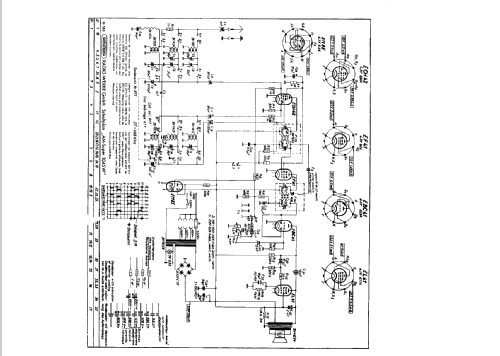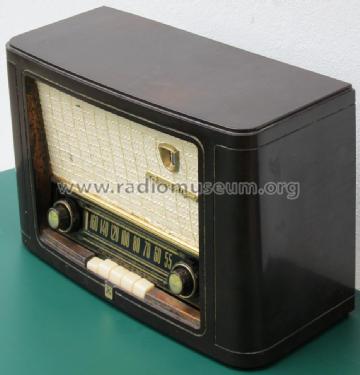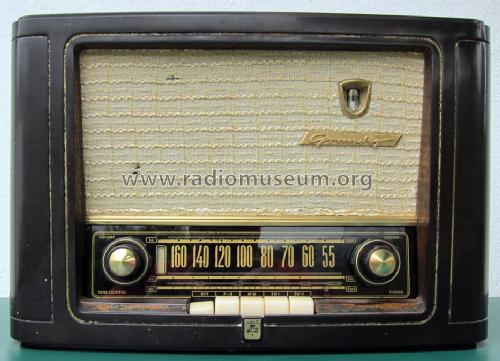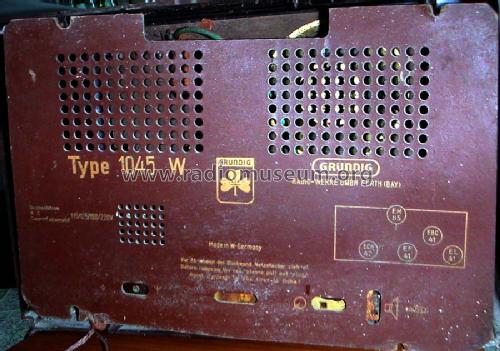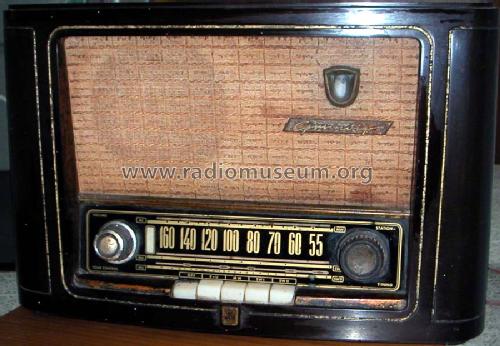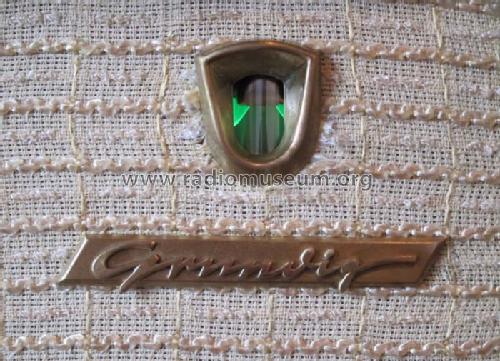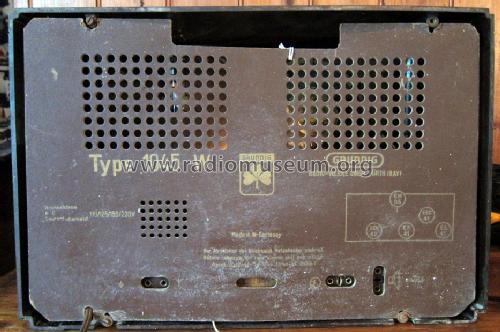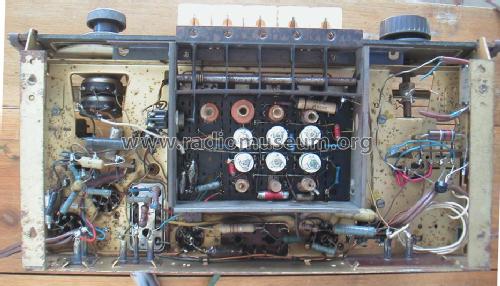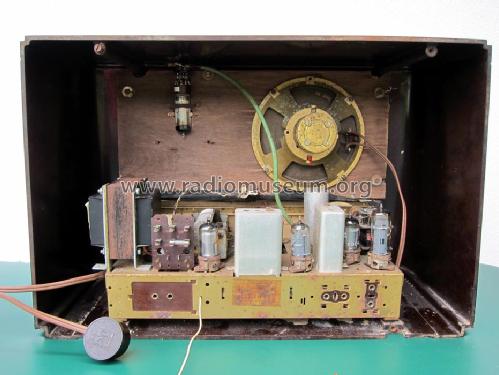- Hersteller / Marke
- Grundig (Radio-Vertrieb, RVF, Radiowerke); Fürth/Bayern
- Jahr
- 1954/1955
- Kategorie
- Rundfunkempfänger (Radio - oder Tuner nach WW2)
- Radiomuseum.org ID
- 87102
-
- anderer Name: Grundig Portugal || Grundig USA / Lextronix
Klicken Sie auf den Schaltplanausschnitt, um diesen kostenlos als Dokument anzufordern.
- Anzahl Röhren
- 5
- Anzahl Transistoren
- Halbleiter
- B250C75
- Hauptprinzip
- Superhet allgemein; ZF/IF 468 kHz; 2 NF-Stufe(n); Exportmodell
- Anzahl Kreise
- 6 Kreis(e) AM
- Wellenbereiche
- Mittelwelle und 2 x Kurzwellen.
- Betriebsart / Volt
- Wechselstromspeisung / 110; 125; 150; 220 Volt
- Lautsprecher
- Dynamischer LS, keine Erregerspule (permanentdynamisch)
- Material
- Gerät mit Holzgehäuse
- von Radiomuseum.org
- Modell: 1045W - Grundig Radio-Vertrieb, RVF,
- Form
- Tischgerät, Tasten oder Druckknöpfe.
- Abmessungen (BHT)
- 463 x 304 x 215 mm / 18.2 x 12 x 8.5 inch
- Bemerkung
- Exportgerät
Wellenbereiche:
MW: 510-1620 kHz
SW1: 2-6 MHz
SW2: 6-17 MHz
- Literaturnachweis
- -- Original prospect or advert
- Autor
- Modellseite von Carlos A. Pieroni-García angelegt. Siehe bei "Änderungsvorschlag" für weitere Mitarbeit.
- Weitere Modelle
-
Hier finden Sie 6245 Modelle, davon 5488 mit Bildern und 4243 mit Schaltbildern.
Alle gelisteten Radios usw. von Grundig (Radio-Vertrieb, RVF, Radiowerke); Fürth/Bayern
Forumsbeiträge zum Modell: Grundig Radio-: 1045W
Threads: 1 | Posts: 8
Fellow Radiophiles,
I am making good progress in the restoration of the Grundig 1045 that belonged to Andre de Melo in my youth. His son Fernando owns it now, and my restoration preserves the radio and fond memories with these friends. I remember hearing this radio during the late 1960's, while it played the soccer broadcast in the tavern that Andre owned next to his general store.
After replacing the rotted out power transformer with a replacement that was given to by RMORG member Ross Hochstrasser, and replacing three resistors and the original electrolytics, the radio is working again. I have another couple of weeks while I am in vacation at Furnas in the Azores to check out it's performance. The only weak tubes were the IF and tuning eye, but I replaced all just the same, while keeping the non-original old ones with the radio.
Ross also supplied me with a set of original knobs, which look great on the radio. I cleaned the three front brass pieces with the american Twinkle copper cleaning creme.
I have two questions:
1-What protective finish should I apply to the brass pieces in this very humid climate?
2-How should have remove the speaker cloth for cleaning?
Is the glue a contact type that softens with alcohol or acetone, or is it a wood glue that would soften with white vinegar and water?
Perhaps the cloth can be cleaned in place, but how?
Is there a danger of shrinkage? As seen in this photo, some shrinkage can be tolerated.
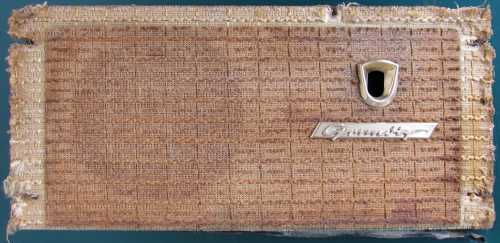
Regards,
-Joe
Joe Sousa, 22.Jul.10
